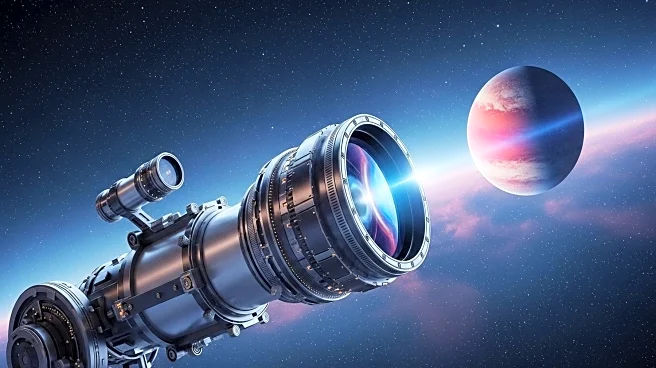What's Happening?
NASA researchers have developed a method to efficiently provide pixel-level spectral error covariance in satellite ocean color products without significantly increasing file sizes. The study focused on the Ocean Color Instrument (OCI) on NASA's PACE mission, which has 286 spectral bands, resulting in a large number of covariance matrix elements per pixel. To address this, the team used a third-degree polynomial approximation to reduce memory overhead, achieving a significant reduction in file size from ~60 GB to ~1.7 GB for a typical five-minute Level-2 file. The polynomial fitting matched well with the original values, maintaining scientific quality with minimal differences in derived ocean color data products.
Why It's Important?
This advancement in data processing is crucial for managing large datasets from hyperspectral imaging spectroradiometers like OCI. By reducing file sizes, researchers can handle and analyze data more efficiently, facilitating better monitoring of ocean color and related environmental factors. The method ensures that scientific quality is preserved, enabling accurate assessments of oceanic conditions such as chlorophyll concentration and water clarity. This innovation supports ongoing efforts to improve remote sensing capabilities and environmental monitoring, which are vital for understanding and addressing global climate change and marine ecosystem health.
What's Next?
The successful implementation of this polynomial approximation method may lead to its adoption in other satellite missions, enhancing data processing efficiency across various applications. Researchers will continue to refine the approach and explore its potential for broader use in remote sensing technologies. The reduced file sizes will enable more comprehensive analyses and facilitate collaborations among scientists studying oceanic and atmospheric phenomena. Future developments may focus on further optimizing data processing techniques to support large-scale environmental monitoring and research.










